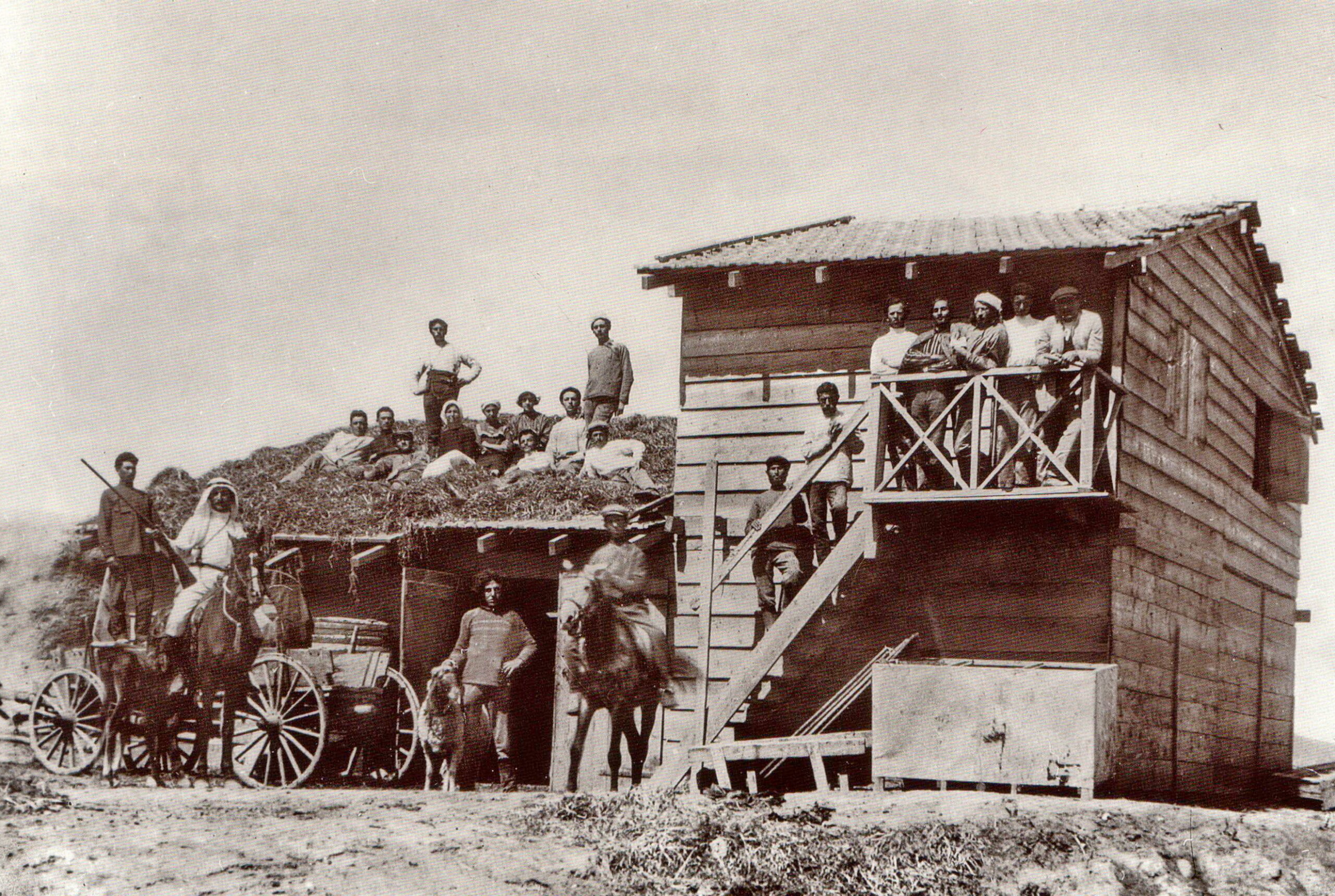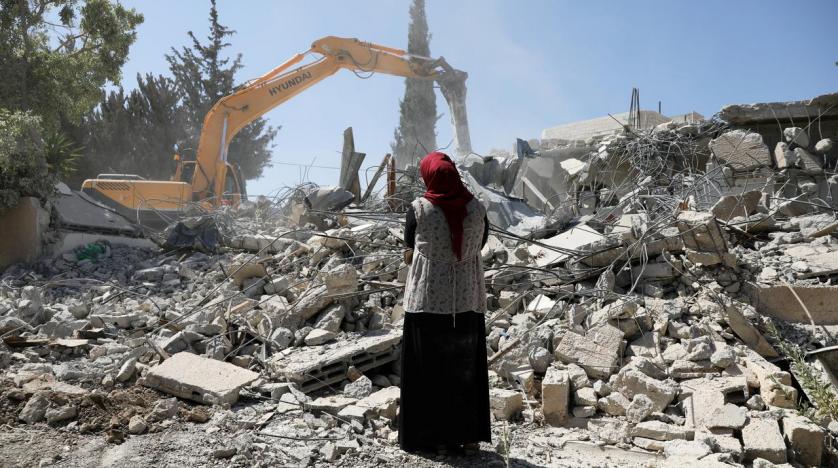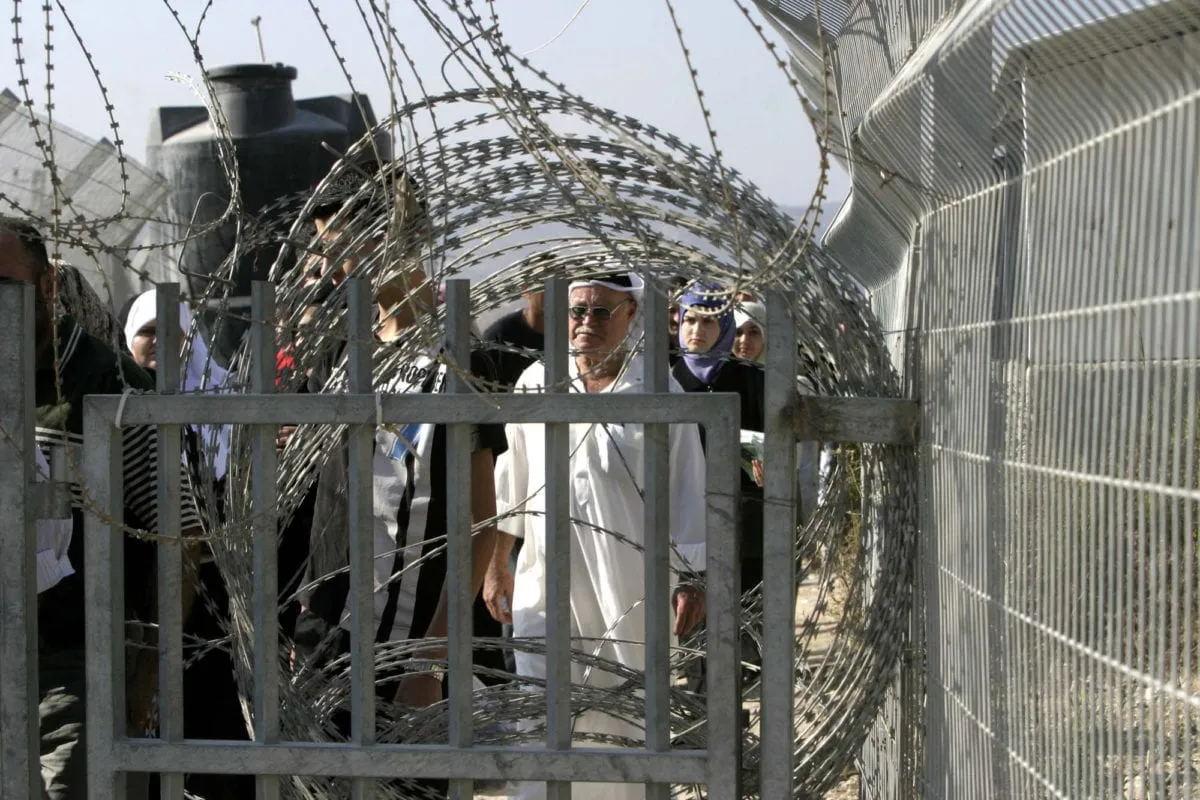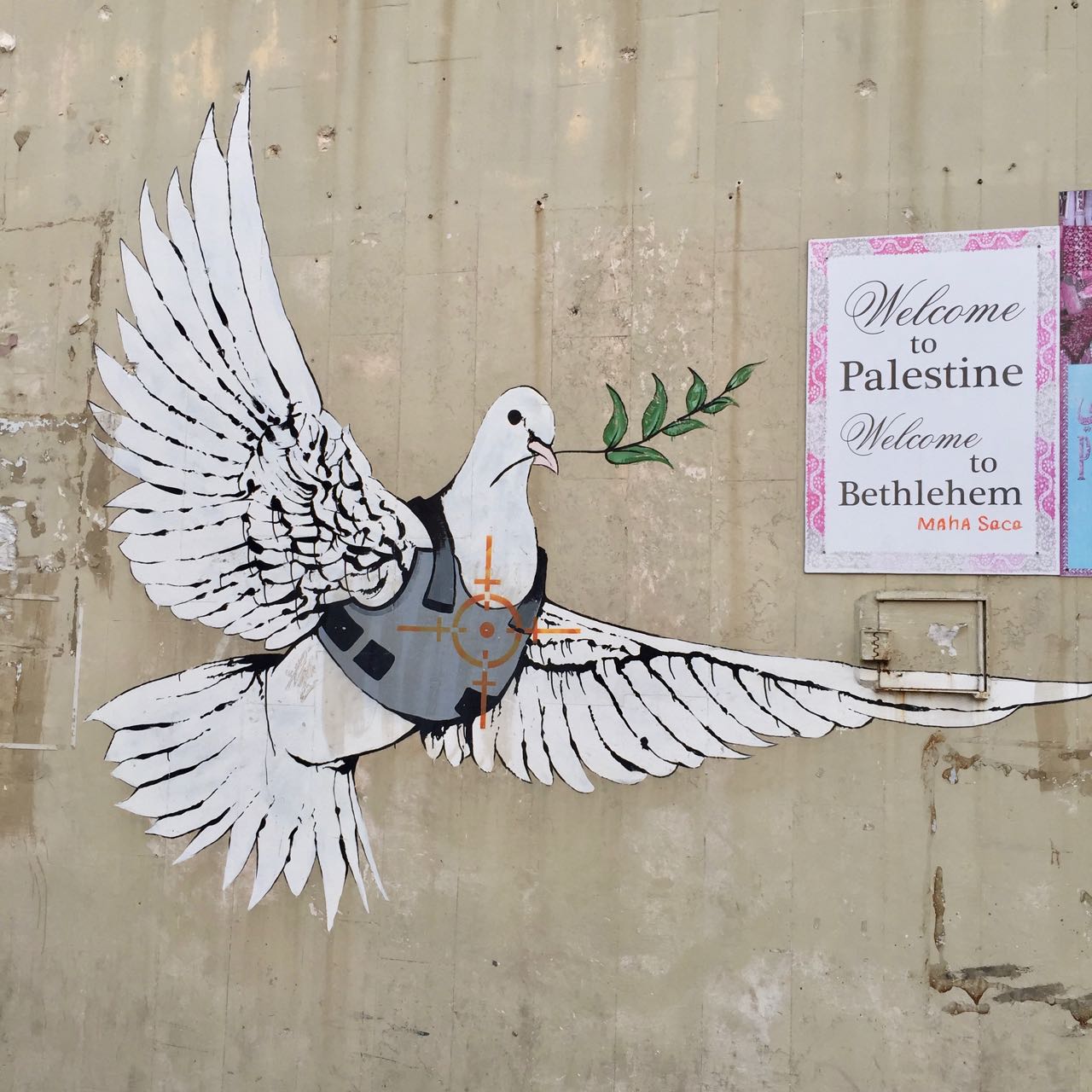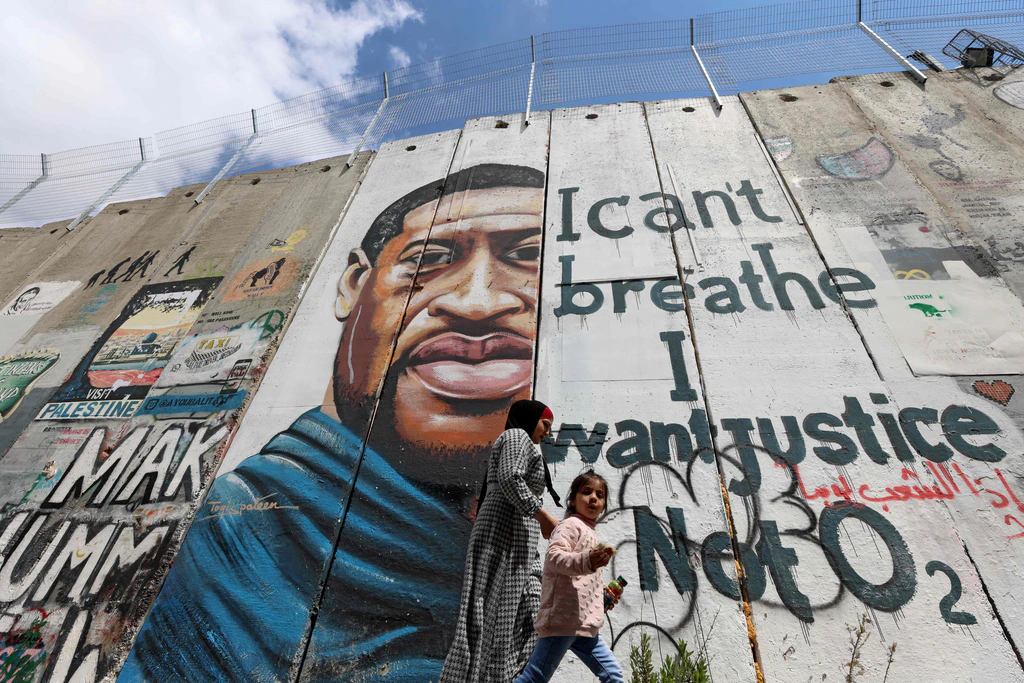 By Francesco Bortoletto and Giulia Maini
By Francesco Bortoletto and Giulia Maini
This is the third and final part of our conversation with Mohammad Arekat. As was the case in the previous episodes, due to time and space constraints, some things were sadly left out of our interview. However, we managed to have a fruitful discussion with him, and tried to retain the most important elements. You can find part 1 and part 2 on the blog’s website.
“Being a Palestinian means that you are not allowed to own land”
According to Israel’s Basic Law: Israel Lands (1960), which builds on the Absentees Property Law (1950) (see previous episode), «the ownership of Israel Lands, being the lands in Israel of the State, the Development Authority or the Jewish National Fund, shall not be transferred either by sale or in any other manner».
The law also established the Israeli Lands Administration (ILA), an agency that manages State land, while also authorising two quasi-governmental bodies – the Development Authority (DA) and the Jewish National Fund (JNF) – to develop the land. Israeli State lands can thus be divided between those belonging directly to the state, those belonging to the DA, and those belonging to the JNF. This way, the government plays a decisive role in land allocation, land-use planning, and development, since it owns around 93% of Israel proper.
Since State lands cannot be sold, the ILA usually leases them to individuals or institutions for periods of 49 or 98 years. Normally, according to a 2008 report by Human Rights Watch, the ILA only leases lands to Jewish Israelis. Moreover, the state transferred the majority of lands to the JNF, which has a specific mandate to develop land for the Jews. Thus, all the land under the control of this entity is off-limits to Arab Israeli citizens – a practice which has been challenged by Israeli NGOs before Israel’s Supreme Court.
The ILA’s Governing Council is composed of 22 members, 12 representing government ministries and 10 representing the JNF, again granting the JNF a highly influential role in both Israeli land policies and the overall allocation of State lands. Now, considering that the loyalty of the «unapologetically discriminatory» JNF is directed only to Jewish Israelis, it is very rare for Palestinians to obtain permissions to access land and/or build a house.
«If a Palestinian wants to obtain land in Israel, they must ask permission to the Admission Committee», Mohammad told us. According to the 1951 Cooperative Societies Ordinance (no. 8) (as amended in 2011), admission committees are in charge of allocating land (and transferring right to land) in a community town, basically presiding over who can access and settle in a community’s area on the grounds of «social suitability» of the applicants. This law, whose legitimacy has been called into question, refers to communities in the Galilee and Negev regions that are classified as rural (community towns), or as cooperative societies for community town, or kibbutzim.
However, the permission is granted on the basis of vague criteria relating to «appropriateness» to the community’s social life, for which applicants must prove «compatibility» with the social-cultural fabric of the community itself. Selection committees consist of government and community representatives as well as senior officials in the Jewish Agency or the Zionist Organisation.
Thus, according to Israeli law, the state owns the land, and the ILA allocates them to the communities and leases plots to individual residents, on the basis of the committees’ recommendations. The ILA justifies this policy by stressing the importance of social cohesion in small communities. In this sense, Mohammad said that «these committees can effectively ban non-Jewish people from taking residence in some areas».
“Being a Palestinian means that you are not allowed to build your own house”
The Planning and Building Law (1965) regulates building activities and land management in Israel and establishes a framework for environmental planning. According to its provisions, each district has its own District Commission, consisting of representatives from both the government and local authorities and acting as a link between national planning regulations and local implementation thereof. Crucially, such commissions determine the construction of a new building as well as the demolition of an existing one.
Mohammad told us that, by virtue of this law, commissions commonly refuse to give permission to non-Jews to construct their own buildings «without even an explanation». According to our guest, in the period 2000-2016, Palestinians in Israel-controlled Area C1 submitted requests for roughly 5,480 building permits, but only 226 were accepted (4,1%). For the period 2016-2018, this ratio dropped to 1,4%, with 21 permits being granted out of 1,485 requests.
«This is a real problem», Mohammad argued, «because we do not know where to go». This policy is clearly discriminatory, as it forces Palestinians to either stay in overcrowded areas, build illegally or move away altogether: an outcome that evidently serves the government’s demographic objectives of «more Jews, less Palestinians».
As a consequence, many Palestinians decide to build «abusively»: as our guest put is, «when you have no place to go, and you have a family and children, this is the reality of your life». The aforementioned commissions, as said, also proceed with so-called administrative demolitions of illegal buildings (i.e. buildings constructed without permission). For reference, in 2016-18, over 2,140 demolition orders were issued in Area C, while an average of almost 56 structures were targeted per month in 2020.
From the perspective of international law, the use of house demolition – and, more generally, the destruction by the occupying power of any property belonging to the occupied population – as a means of collective punishment is prohibited under the 1949 Fourth Geneva Convention (except where it is «absolutely necessary» on military grounds). Ironically enough, according to Israeli law, those who face demolitions must pay for it at their own expense.
Moreover, Mohammad insists that these norms are not applied equally to all citizens. For instance, he contended, if a Jewish family built an illegal house, then the commission will most likely refrain from issuing any demolition order. As a matter of fact, not only are Israelis allowed, but even encouraged to expand their settlements in the OPT.
In February 2017, the Knesset passed the Settlement Regularisation Law, basically providing for retroactive legalisation of illegal outposts (i.e. unauthorised settlements) in the occupied West Bank by expropriating privately-owned Palestinian land. After the government’s Attorney General asked the Supreme Court to strike the bill down (while at the same time suggesting alternative legal avenues to approach the contested issue), a nine-justices panel ruled in June 2020 that the bill was actually unconstitutional, and demanded it be repealed.
Interestingly enough, the ruling was chiefly grounded on the law’s inconsistency with Israeli constitutional doctrine (1992 Basic Law: Human Dignity and Liberty), rather than on its incompatibility with international occupation law.
On her part, Lynn Hastings (UN-appointed Resident Coordinator and Humanitarian Coordinator for the OPT, and Deputy Special Coordinator for the Middle East Peace Process) unmistakably insists that «all settlement activities, including evictions and demolitions, are illegal under international law».
“Being a Palestinian means that you are not allowed to move freely”
B’Tselem, an Israeli human rights organisation, published a report in 2017 about the movement restrictions placed on Palestinians by Israeli authorities. According to the analysis, restricting movement is one of the main tools employed by Israel to enforce its regime of occupation and segregation in the OPT. Palestinians are restricted within the different parts of the segmented OPT, between them, into Israel proper, and abroad (the Palestinian diaspora is denied the right to return).
«Only Palestinians are restricted in this manner, while settlers and other civilians – Israeli and foreigners – are free to travel», the report reads. Mohammad gave us a practical example of this situation: «If I want to go from my city to another one, which in theory is only 15 minutes walking from here, in reality it would take one hour by car». He explained that this is due to the presence of checkpoints, closed streets, and controls by Israeli authorities.
The report explained how Israel manages the OPT as three separate, unrelated areas: (a) the Gaza Strip, which it holds besieged through a combined sea, air and land blockade since 2007 despite having withdrawn its settlers and military in 2005; (b) the occupied West Bank, where it exercises full military control; and (c) East Jerusalem, which it has unilaterally annexed to its sovereign territory in 1980. Israel allows Palestinians to travel between these areas only if they obtain a special permit for any purpose whatsoever, including work, medical care, and family visits.
Moreover, Palestinians face much more hurdles when moving from Gaza to the West Bank or, worse, East Jerusalem, than the other way around. This is again due to the policy objective of Judaization of Jerusalem and the broader West Bank. Indeed, by making it harder for Palestinians to flow there, while letting them converging into the Strip, Israeli authorities seek to reduce the number of Arabs in the region.
To obtain the aforementioned permits, Palestinians face an «arbitrary, entirely non-transparent bureaucratic system», according to B’Tselem. Applicants cannot duly assess the chances that their applications will be approved nor when, the report goes. The bulk of applications is denied without explanation, in the lack of any real avenue for further appeal.
Even permits already issued are easily revoked, also without explanation. As of January 2017, there were 98 permanent checkpoints in the occupied West Bank. Moreover, most of the roads are partially off-limit to Palestinians.
Concerning the road networks accessibility, Mohammad noted that Palestinians are not allowed to use the same ones as Jews. «The Israeli government built a wall that divides roads because they say Jewish people do not feel safe in driving next to us», he told us.
B’Tselem also noted that Israel has created an alternate network of roads intended for Palestinians only. Referred to as fabric-of-life roads, they were also paved on land expropriated from Palestinians and include tunnels and bypass roads that connect the «Palestinian ghettos» throughout the occupied West Bank.
“As a Palestinian, you are nothing”
After a lively two-and-a-half-hour chat, we eventually asked Mohammad one last question. We now know that occupation law, or some version thereof, should be applicable in the OPT. But as it is so evidently not the case, what is the actual body of laws Palestinians are effectively treated under? The question was relatively simple; yet, the answer was far from it.
Our guest explained to us that the legal framework applied by Israeli authorities varies depending on both one’s citizenship and on where one lives. As for geography, he disclosed to us the difference between coloured IDs. Palestinians in the OPT are conferred a differently coloured card depending on the specific area where they live: green IDs for Gaza and the occupied West Bank, blue IDs for East Jerusalem.
As intuitive as this may sound, movement between different parts of the OPT, and sometimes even within the same areas, is in fact unfairly complex for Palestinians. Although blue ID holders are nominally granted greater freedom, there is nevertheless a hidden side to that: in order not to see their residency permit revoked, they need to constantly prove not only their linkage, but even their «allegiance» to the city (another illegal act under IHL, which stipulates that the occupied populations cannot be asked to swear allegiance to the occupying power).
On his part, as he lives in Abu-Dis in the occupied West Bank, Mohammad holds a green ID. From his house, he can see the Old City and the shining Dome of the Rock, which is at a walking distance of about 15 minutes, yet he is not allowed to go there.
For many observers, this colour-based identification system (based on much contested population registries) is but one of several elements through which Israel effectively maintains control over the occupied Palestinian population, also in combination with a capillary network of patrols and checkpoints.
In other words, a «tool of control» that substantially helps Israeli authorities to constantly assert their domination by means of keeping Palestinians as separated as possible from each other. The old saw, divide et impera («divide and rule»), apparently retains much validity still today.
Now, what about citizenship? Does Israeli military law apply to Israeli settlers in the OPT as well? «The answer is no», said Mohammad: they are under Israeli civil law, albeit effectively living outside Israel’s sovereign territory. Our guest put it this way: if he himself did anything against an Israeli public officer in Abu-Dis (Area C), then he would be sued under military law; instead, if his Jewish neighbour commits the same offence, then the latter would be sued under civil law.
«You have to accept your status here», Mohammad concluded. «You need not be treated as a human: you are nothing, as a Palestinian. Even if you hold Israeli citizenship, even if you are a resident…you are still a Palestinian».
Notes
1. Under the terms of 1995 agreements (Oslo II), the OPT were divided into three distinct areas, each under different mixes of Israeli-Palestinian control:
- Area A (the Gaza Strip plus an original 3% of the West Bank, now approximatively 18%), where the newly established Palestinian Authority (PA) was to exercise both civil and security control;
- Area B (initially some 24%, now around 22% of the West Bank), where the PA was to exercise civil administration but where Israel maintained military control; and
- Area C (the remaining part of the West Bank, originally about 73%, now roughly 60%), under Israeli civil and military control.
The so-called Oslo Process was ostensibly intended to set the preliminary framework for a comprehensive negotiation between Israel and the PA that would have eventually led to the establishment of two separate and independent states. However, the peace process came to a halt in the late 1990s and was never effectively resumed since. Nonetheless, the geographical division into different areas is still relevant today.

